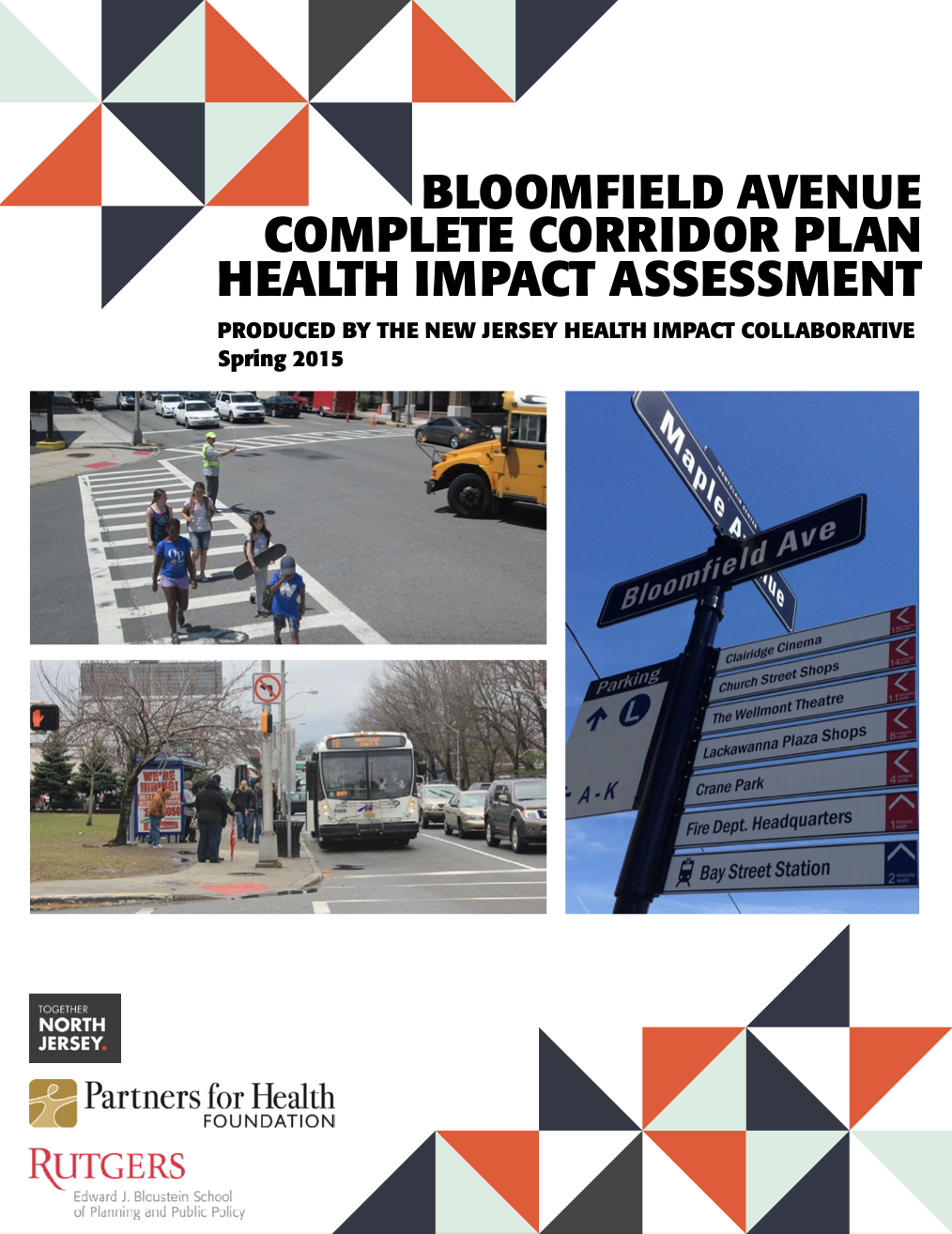The New Jersey Health Impact Collaborative at Rutgers University (NJHIC) conducted a Health Impact Assessment (HIA) in conjunction with a Local Demonstration Project funded by Together North Jersey. The Bloomfield Avenue Complete Corridor Plan included the towns of Bloomfield, Glen Ridge, Montclair and Verona in Essex County, New Jersey.
By combining scientific data, health expertise and public input, HIAs identify and assess the potential positive and negative health effects of decisions related to policies, programs or projects. The HIA considers a range of social, environmental and economic influences on health and places an emphasis on identifying groups of people who might be either positively or negatively impacted by the way
the corridor functions. HIA follows a six-step method that results in a set of recommendations and a monitoring plan.
The vision of a healthy Bloomfield Avenue is one where pedestrians and bicyclists of all ages and abilities can safely access and use of the corridor for walking and bicycling with minimal risk of crashes and minimal exposure to noise and air pollution, where motor vehicle traffic is efficiently managed to reduce driver stress, and where social interaction leads to improved mental health and a vibrant business environment. The HIA was prepared for a potential future comprehensive complete corridor plan, specifically consisting of a “road diet.” The main element of the road diet is to reduce at least one lane of motor vehicle traffic along the four-lane Bloomfield Avenue, and reconfigure the remaining lanes for improved safety. The goal of a road diet is to more safely accommodate pedestrians (shorter crossings), bicyclists (dedicated lanes), transit users (improved bus stops) and drivers (easier navigation). The goal of the HIA was to expand knowledge and understanding about the impacts of a road diet on public health in order to develop recommendations to inform decision-makers as they weigh the benefits and costs of various options to implement a road diet.
